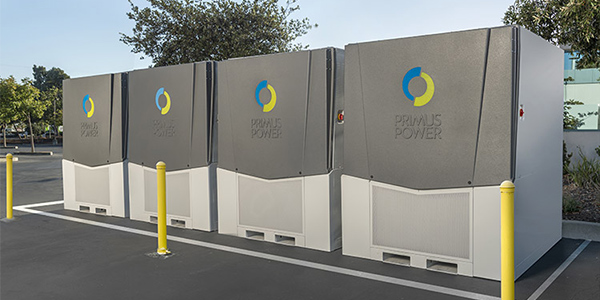Stakeholders received a look at the design components of PJM’s proposal to develop rules for how storage should be considered in the Regional Transmission Expansion Plan (RTEP) process.
During last week’s Planning Committee meeting, PJM’s Michele Greening discussed work conducted on storage as transmission assets (SATA). Stakeholders approved an issue charge at the PC meeting May 12, and they have been working on the issue at special sessions since June. (See SATA Issue Charge Moves Forward in PJM.)
Greening said the Phase 1 effort of the issue explored existing transmission planning criteria, including the performance measurement methodology and where there were gaps in planning. She said work at the special sessions developed additional criteria to be used in evaluating SATA to address reliability, market efficiency, operational performance and public policy.
PJM also examined reliability aspects of SATA and establishing clear and transparent criteria, Greening said, while receiving education on current business rules, regulatory background and FERC precedent on the issue. It also looked at the development of criteria for modeling SATA and evaluating proposals in relation to traditional transmission projects.
Greening said the RTO stayed away from examining SATA participating in the energy or ancillary services markets. She said those issues would be reserved for a Phase 2 process.
“We wanted to make sure that we have the necessary criteria in place that would allow stakeholders some transparency into how PJM would evaluate and incorporate such assets into the RTEP process,” Greening said.
In nonbinding poll results, Greening said 77% of respondents indicated they would support the PJM package proposal “to ensure existing planning rules provide sufficient clarity regarding how SATA should be evaluated and incorporated into the RTEP process.”
An additional 72% of poll respondents said they would support continued discussions following Phase 1 to explore SATA market participation and the resulting process and tool changes.
Jeff Goldberg of PJM presented the first read of the RTO’s package, saying it would establish requirements to ensure implementation maintains system reliability consistent with NERC standards. The SATA evaluation approach also seeks to ensure there are no adverse impacts to the generation interconnection queue, Goldberg said.
Nick Dumitriu of PJM discussed the market efficiency aspects of the package, saying the RTO does not recommend any SATA-specific rule changes. Dumitriu said an evaluation of PJM rules found that the current tools and analysis techniques are already sufficient to study and assess SATA.
Greening addressed the next steps in the SATA process, including a vote on the package at the Dec. 1 PC meeting and a first read at the January Markets and Reliability Committee meeting with the supporting Operating Agreement language. After endorsement at the February MRC meeting, Greening said, the package will be submitted to FERC for approval.
PJM’s intention is to wait to see FERC’s response to the filing prior to drafting manual language revisions, Greening said.
Stakeholder Responses

Independent Market Monitor Joe Bowring said he questioned the logic of SATA and noted that discussions have assumed it to be a good idea, with talks focusing on implementation rather than if it is wise. It seemed as if the issue was “being brushed over at the moment,” he said.
“We don’t think that storage should ever be considered to be a transmission asset,” Bowring said. “It’s already a market asset.”
Greening said the PJM package specifically limits SATA to being transmission and cannot be listed as a market asset if it’s brought online for transmission purposes.
Aaron Berner of PJM noted that initial discussions held in the special sessions indicated support to move ahead on the issue, with the RTO receiving no “pushback” from stakeholders to abandon the dialogue.
Carl Johnson of the PJM Public Power Coalition pointed out one of PJM’s design components in the package regarding cost elements in the reliability category: “SATA will not participate in its markets but will use the appropriate settlement mechanisms to settle the charging and discharging functions to offset the rate of recovery.”
Johnson asked how PJM envisions the rate of recovery offset occurring. He said if a SATA is charging and discharging, it could potentially be making a profit on that action.
Berner said an entity proposing use of SATA would need to demonstrate they have established mechanisms that the net positive benefits of the energy flow would flow back to an offset mechanism to achieve the rate recovery. Berner said PJM is not anticipating making changes to how the settlements occur.
Johnson said PJM may want to establish a procedure in the Tariff and make it uniform rather than having it be a “one-off, untraceable rate filing” with FERC.
“These things are very hard to track on a uniform basis,” Johnson said. “There really isn’t any way to make sure these things are being properly accounted for across the system.”
Sharon Segner, vice president of LS Power, asked at what point stakeholders would be able to see the Operating Agreement language for the PJM package.
Greening said the language would be presented at the January MRC meeting, provided the PC supports moving forward with the PJM package.
Segner said the “guts” of a solution and issue is in the OA language, with stakeholder discussions and support difficult before seeing what is crafted. Segner said the process is “optimized” when the OA and governing language is seen at the lowest possible committees so that discussions can start early.
“At the end of the day, the words do matter, and they especially matter when it comes to Operating Agreement language,” Segner said. “It sounds a little bit premature.”






